Maximierung der Solarpanel-Effizienz für 48-V-Golfwagenbatterien
Wenn Sie saubere, erneuerbare Energieoptionen suchen, um die Ladung und Lebensdauer Ihrer 48-V-Golfwagenbatterien zu verlängern, ist die Maximierung der Solarpanel-Effizienz einer der wichtigsten Schritte. Von der Platzierung und Verkabelung der Solarmodule bis hin zur Batteriekompatibilität und Umweltfaktoren: Wenn Sie wissen, wie Sie das Beste aus Ihrer Anlage herausholen, kann dies zu einer längeren Batterielebensdauer, geringerem Wartungsaufwand und einer größeren Reichweite führen.
- Die Effizienz von Solarmodulen für Golfwagen-Batteriesysteme verstehen
- Tipps zur Effizienz von Solarmodulen zur Maximierung der Energieproduktion
- Auswahl des richtigen Solarladereglers für maximale Solarmoduleffizienz
- Effizienz von Solarmodulen bei unterschiedlichen Wetter- und Umweltbedingungen
- Batterie- und Solarsystemintegration für maximale Solarmoduleffizienz
- Überwachung und Wartung zur Aufrechterhaltung der Effizienz von Solarmodulen
- Fortschrittliche Techniken zur Steigerung der Effizienz von Solarmodulen in Golfwagen
- Kostenüberlegungen beim Streben nach maximaler Solarmoduleffizienz
- Fallstudien und praktische Ergebnisse zur Verbesserung der Effizienz von Solarmodulen
- Gängige Mythen über die Effizienz von Solarmodulen
Die Effizienz von Solarmodulen für Golfwagen-Batteriesysteme verstehen
Der Wirkungsgrad von Solarmodulen gibt an, wie effektiv Solarmodule Sonnenlicht in nutzbare elektrische Energie umwandeln. Bei einem 48-V-Golfwagen-Batteriesystem bestimmt der Wirkungsgrad, wie schnell und zuverlässig sich Ihr Batteriespeicher im Laufe des Tages auflädt. Je höher der Wirkungsgrad, desto mehr Strom wird auf der gleichen Fläche der Solarmodule erzeugt.
Warum Effizienz bei 48-V-Systemen wichtig ist
Im Gegensatz zu 12-V- oder 24-V-Systemen benötigt eine 48-V-Golfwagenbatterie eine höhere Spannung und in der Regel mehr Watt für eine vollständige Aufladung. Hocheffiziente Solarmodule können diesen Bedarf mit weniger Modulen decken und so Platz und Installationsaufwand reduzieren.
Gemessene Effizienz und Leistung in der Praxis
Effizienzwerte werden üblicherweise unter idealen Laborbedingungen gemessen. Beispielsweise wandelt ein Solarmodul mit einem Wirkungsgrad von 20 % 20 % des Sonnenlichts in Strom um. Reale Variablen wie Beschattung, Hitze und Winkel können die Effizienz von Solarmodulen jedoch erheblich beeinflussen.
>>Siehe auch: Verwendungsmöglichkeiten und wichtige Fakten zu Batterien der Gruppe 27
Tipps zur Effizienz von Solarmodulen zur Maximierung der Energieproduktion
Um die Energieproduktion Ihrer Solarmodule zu maximieren, müssen Sie neben den technischen Daten des Moduls auch andere Faktoren berücksichtigen. Ihr Nutzungsverhalten, die Umgebung und die Batteriekonfiguration spielen ebenfalls eine Rolle.
Wählen Sie hocheffiziente monokristalline Module
Monokristalline Solarmodule bieten den besten Wirkungsgrad und eignen sich ideal für begrenzte Flächen, wie z. B. das Dach eines Golfwagens. Ihr hoher Energieertrag pro Quadratmeter sorgt dafür, dass Ihr 48-V-System schneller und gleichmäßiger aufgeladen werden kann.
Optimieren Sie die Platzierung und den Winkel der Panels
Ausrichtung und Neigungswinkel haben einen großen Einfluss auf die Effizienz von Solarmodulen. Richten Sie Ihre Module während der Spitzenzeiten so aus, dass sie der Sonne möglichst direkt zugewandt sind. Bei tragbaren oder auf Golfwagen montierten Systemen können verstellbare Halterungen die Ausrichtung am Sonnenstand unterstützen.
Vermeiden Sie Schatten und Schmutz
Schon geringe Mengen Schatten oder Schmutzansammlungen können die Effizienz von Solarmodulen halbieren. Halten Sie die Module sauber und installieren Sie sie an Orten, an denen tagsüber nur minimaler Schatten entsteht.
Auswahl des richtigen Solarladereglers für maximale Solarmoduleffizienz
Ein hochwertiger Solarladeregler sorgt für eine sichere und effiziente Energieübertragung zwischen der Solarzellenanordnung und der 48-V-Golfwagenbatterie.
MPPT- vs. PWM-Controller
MPPT-Regler (Maximum Power Point Tracking) werden bevorzugt, um die Effizienz von Solarmodulen zu maximieren, insbesondere in Systemen mit höherer Spannung wie 48 V. Sie passen sich an wechselnde Lichtverhältnisse an und optimieren die Spannungsumwandlung besser als einfache PWM-Regler.
Richtige Dimensionierung des Controllers
Ihr Laderegler sollte den Spannungs- und Stromanforderungen Ihres Systems entsprechen. Stellen Sie bei einem 48-V-System sicher, dass der Regler sowohl die Eingangsspannung Ihres Panel-Arrays als auch den maximalen Ausgangsstrom zum Laden der Batterie verarbeitet.
Effizienz von Solarmodulen bei unterschiedlichen Wetter- und Umweltbedingungen
Externe Faktoren beeinflussen die Solarleistung erheblich. Wenn Sie verstehen, wie sich die Umgebung auf die Effizienz von Solarmodulen auswirkt, können Sie Anpassungen vornehmen, um eine konstante Leistung zu gewährleisten.
Auswirkungen von Hitze und Feuchtigkeit
Hohe Temperaturen können die Effizienz von Solarmodulen beeinträchtigen. Obwohl die Module Sonnenlicht benötigen, erhöht übermäßige Wärme den Widerstand innerhalb der Zellen. Wenn Sie in einem heißen Klima leben, stellen Sie sicher, dass unter den Modulen ausreichend Luft zirkulieren kann.
Umgang mit Schnee, Staub und Regen
Schnee und starker Staub blockieren das Sonnenlicht vollständig. Verwenden Sie schmutzabweisende Beschichtungen oder planen Sie eine regelmäßige Reinigung ein. Regen verringert zwar vorübergehend die Effizienz, kann aber auch zur natürlichen Reinigung der Module beitragen und die Leistung nach Aufklaren des Wetters wiederherstellen.
Batterie- und Solarsystemintegration für maximale Solarmoduleffizienz
Durch die richtige Systemauslegung wird sichergestellt, dass die von den Solarmodulen erzeugte Energie effektiv gespeichert und genutzt wird.
Anpassen der Panelleistung an die Batterieanforderungen
Für 48-V-Golfwagenbatterien benötigen Sie ausreichend Spannung und Stromstärke, um den Ladezustand aufrechtzuerhalten. Normalerweise liegt die Spannung bei etwa 54–58 V für eine vollständige Ladung. Um diesen Wert zu erreichen, können mehrere Module in Reihe oder parallel geschaltet werden.
Batterietyp und Ladeprofil
Verschiedene Batteriechemikalien – wie Blei-Säure-, AGM- und Lithium-Eisenphosphat-Batterien – erfordern unterschiedliche Spannungsniveaus und Ladeprofile. Ein programmierbarer MPPT-Regler stellt sicher, dass Ihre Solarenergiezufuhr mit der optimalen Batterieladekurve übereinstimmt und so die Effizienz der Solarmodule maximiert wird.
Überwachung und Wartung zur Aufrechterhaltung der Effizienz von Solarmodulen
Um sicherzustellen, dass Ihre Solaranlage weiterhin mit maximaler Effizienz arbeitet, sind laufende Wartung und Leistungsüberwachung unerlässlich.
Installieren eines Überwachungssystems
Verwenden Sie einen Solarleistungsmonitor oder einen intelligenten Laderegler, um die Energieerzeugung Ihres Systems zu verfolgen. Dank Echtzeitdaten können Sie Leistungseinbrüche schnell erkennen.
Routinemäßige Reinigung und Inspektion
Reinigen Sie die Paneloberfläche regelmäßig, um Vogelkot, Blätter und Schmutz zu entfernen. Überprüfen Sie die Verkabelung auf Korrosion oder Beschädigungen und kontrollieren Sie die Montagehalterungen, um sicherzustellen, dass die Panels sicher positioniert sind.
Fortschrittliche Techniken zur Steigerung der Effizienz von Solarmodulen in Golfwagen
Über die Grundlagen hinaus können mehrere erweiterte Methoden die Leistung Ihres Solarpanelsystems weiter verbessern.
Verwenden Sie Reflektoren und Konzentratoren
Durch das Anbringen von Aluminium- oder Spiegelreflektoren um die Paneele herum können Sie die Lichteinstrahlung erhöhen und die Effizienz der Solarpaneele steigern, insbesondere in den frühen Morgen- oder späten Nachmittagsstunden.
Kombinieren Sie mit regenerativen Bremssystemen
Einige Golfwagen können Solarenergie mit regenerativem Bremsen kombinieren. Dieser Dual-Source-Ansatz stellt sicher, dass die Batterien während des Betriebs sowohl durch Bremsen als auch durch Sonnenlicht aufgeladen werden.
Upgrade auf intelligente Batteriemanagementsysteme
Ein intelligentes BMS kann den Strom intelligent verteilen, Überladung verhindern und einzelne Zellen ausgleichen. Dies maximiert die Gesamtlebensdauer des Systems und verbessert die Effizienz der Energieumwandlung vom Panel zur Batterie.
>>Siehe auch Erklärung der Gabelstaplerbatteriespannung: 12 V oder 24 V
Kostenüberlegungen beim Streben nach maximaler Solarmoduleffizienz
Hohe Effizienz bedeutet nicht immer hohe Kosten. Durch strategische Investitionen lässt sich eine optimale Kapitalrendite erzielen.
Kosten und Output ausgleichen
Manchmal können Sie durch etwas mehr Geld für hocheffiziente Panels und MPPT-Controller den Bedarf an zusätzlichen Komponenten reduzieren. So bleibt Ihr System kompakt und leistungsstark.
Anreize und Rabatte
Informieren Sie sich über Solarsteuergutschriften und Ökostromrabatte in Ihrer Region. Diese können die Anschaffungskosten Ihres Solarladesystems kompensieren und die Investition in effiziente Technologie erleichtern.
Fallstudien und praktische Ergebnisse zur Verbesserung der Effizienz von Solarmodulen
Praktische Beispiele zeigen, wie die Optimierung der Effizienz von Solarmodulen zu konkreten Vorteilen führen kann.
Die 48-V-Golfwagenflotte eines Resorts
Ein Golfresort rüstete 20 Golfwagen mit 300-W-Monokristallmodulen und MPPT-Reglern nach. Innerhalb von sechs Monaten konnte eine Reduzierung der Ladeausfallzeiten um 30 % und eine Erhöhung der Reichweite pro Ladezyklus verzeichnet werden.
Persönlicher Gebrauch in ländlichen Gegenden ohne Stromnetz
Ein Hausbesitzer in Arizona stattete seinen Wagen mit 400 Watt starken Hochleistungsmodulen aus. Durch intelligente Überwachung und tägliche Reinigung konnte er seine Netzabhängigkeit um über 80 % reduzieren.
Gängige Mythen über die Effizienz von Solarmodulen
Missverständnisse können zu Fehlentscheidungen führen. Wir räumen mit einigen gängigen Mythen auf.
Mythos: Alle Panels funktionieren gleich
Fakt: Zwischen polykristallinen und monokristallinen Modulen besteht ein großer Unterschied in puncto Effizienz und Haltbarkeit. Überprüfen Sie immer die Angaben des Herstellers.
Mythos: Größere Panels sind immer besser
Fakt: Eine Überdimensionierung ohne Berücksichtigung der Batteriespannung oder der Controllerkapazität kann zu Stromverschwendung und einer verringerten Effizienz des Solarmoduls führen.

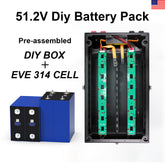

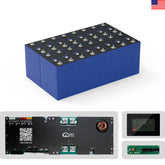

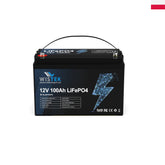

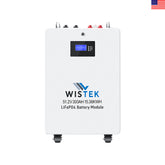
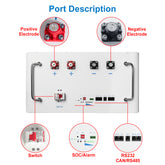
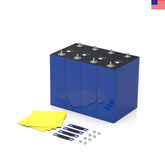



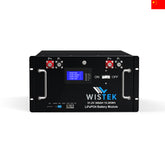
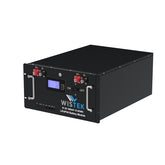
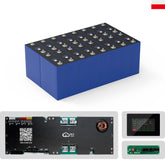








Leave a comment
All blog comments are checked prior to publishing